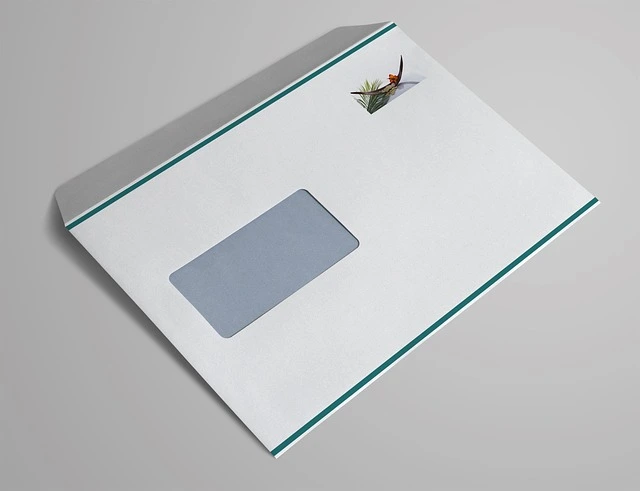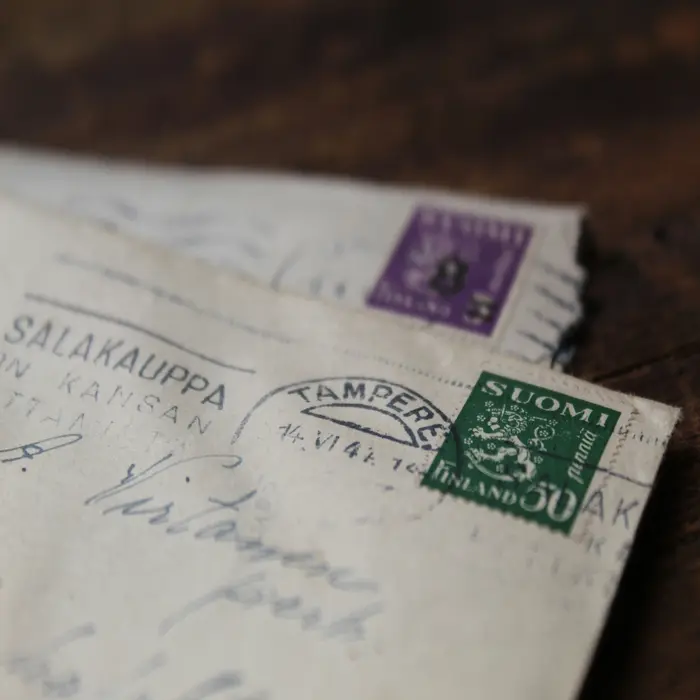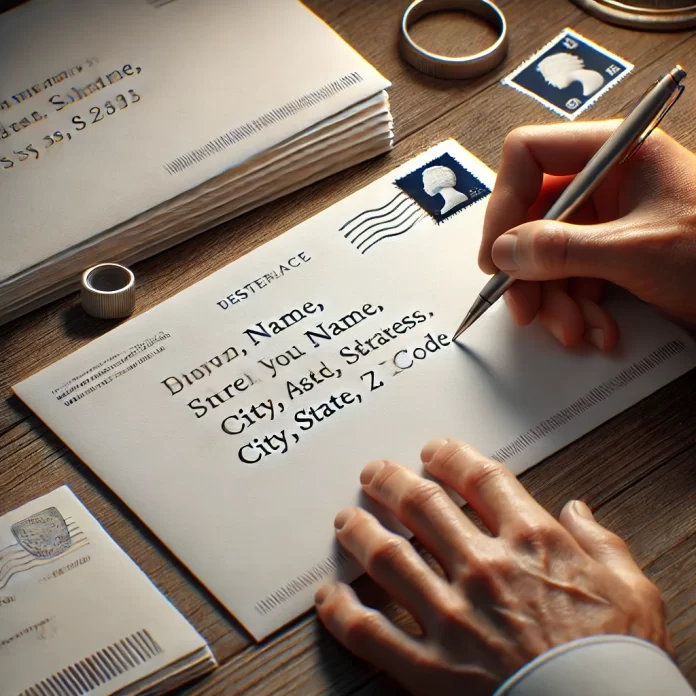Effective communication and professionalism depend importantly on addressing an envelope correctly, rather than just it being a mundane task. Whatever your mail includes—a business letter, a simple greeting card, or correspondence sent through traditional means—understanding how to properly address an envelope maintains your delivery’s speed and eliminates unessential hold-ups. This extensive guide reviews the details of envelope etiquette, supplying important tips and step-by-step methods to help you correctly address envelopes in accordance with USPS regulations.
Knowing the Fundamentals of an Envelope
Going into the complexity of addressing an envelope requires a fundamental understanding at the outset. A flat, paper container used to hold a letter or other papers for shipping is known as an envelope. Envelopes showcase an array of sizes, designs, and textures, each with a different application.
Parts of an Envelope
The commonly used envelope generally contains both the front and back sides, plus a flap that seals the contents. On the front of the envelope, you should place the recipient’s address, while the back is either without design or may feature branding or your return address. At the high point of the flap is a design that makes sure the envelope seals securely, which protects the mail during its course.
Address an Envelope
Addressing an envelope in the right way helps fulfill multiple functions. In the first place, it makes sure that your mail gets to its intended recipient without becoming lost or delayed. In addition, it demonstrates both your familiarity with detail and your consideration for the recipient in regard to whether it’s a personal note or a professional message.
Results of Inappropriate Addressing
Improperly preparing an envelope may trigger key problems, such as late delivery or mail that is returned. Problems or deficiencies in the thorough completion of addresses could cause delivery problems for postal networks, which may indeed trouble both the sender and recipient. If there are any shortcomings in the return address, the return won’t happen if the mail is undeliverable, and thus the dialogue is lost.
Seeing the bigger picture of mail is important when filling out addresses. Any form of correspondence made up of handwritten letters, postcards, or packages is referred to by the term mail. Each category needs special addressing methods for successful delivery.
Types of Mail
First-Class Mail:
Traditionally used for personal and business interactions, standard addressing formats are a requirement.
Priority Mail:
Adds services that include faster delivery along with tracking and insurance.
Certified Mail:
Typical application involves proving dispatch and delivery for important documents.
Stamp
A stamp is an important part of posting an envelope. It reveals that the required postage is settled for the distribution of your mail.
Choosing the Right Stamp
The decision regarding the stamp depends on envelope weight, its dimensions, and the chosen destination. One Forever Stamp is usually enough for standard letters inside the U.S. It is possible that extra postage will be necessary for heavier or very large envelopes. Familiarity with the right stamps for various mail is necessary to avoid paying extra postage.
Placing the Stamp Correctly
Put the stamp in the upper right-hand side of the envelope at all times. Affix it with care and flat on the envelope surface to stop it from peeling or catching during transportation.
Return Address
A return address is necessary because it assists in returning the mail if the delivery is less than successful. Inside the upper left corner of the envelope, place your return address. Include in it your entire name, home address, city, state, and postal code. This serves to recover mail that did not successfully deliver, and at the same time, improves the professional effectiveness of your communication. Return address in the top and address in the top left. must mention city name, country name and then address on the envelope and write a return address . These are some tips for addressing an envelope. Envelope is easy, must put the sender’s name , recipient’s name and address followed by the street
Benefits of a Return Address
Traceability: Helps to identify the mail’s origin.
Professionalism: Reflects attention to detail.
Recovery: Secures mail return if it fails to deliver.
Sender
We refer to the individual or company as the sender, which is the one issuing the mail. Previously mentioned, the importance of correctly recognizing the sender through the return address is fundamental.
Including Sender Information
Ensure that the address of the sender is totally complete and also easy to decipher. This includes:
- Sender’s Name and Address: First name and last name, Street Address, City, State, ZIP Code.
- Sender’s Address Placement: Usually in the top many of us face barriers that impede their growth. Typically, we typically encounter barriers that stop our development in the top left corner of the envelope.
- Write the Sender’s Name: Writing your name distinctly is important so as to avoid confusion.

Tips on how to address an envelope.
Accurately addressing an envelope increases the readability and accuracy of your correspondence delivery. The following advice will help you address your envelopes correctly.
Handwriting vs. Printing Addresses
Even though handwritten addresses convey a personal feel, they can occasionally be tougher to read than those printed. With writing by hand, be conscious of making sure your writing looks good, is clear and legible, and as far as possible, steer clear of cursive which may lead to interpretation challenges. Maintaining clarity and uniformity is made easier by the alternative method of printing addresses using a computer or a label maker.
Showing faith in the exactitude as well as the accuracy.
No matter if you choose handwriting or printing, having a legible and accurate address is absolutely necessary. Put dark ink onto a light-colored envelope, and skip decorative typefaces or colors that might affect readability. Regain access to all address information to guarantee that it is without any mistakes.
FPO
FPOs (Fleet Post Office) are the addresses utilized for service members deployed abroad. Making sure you correctly address an FPO address guarantees your mail reaches its intended military recipient quickly.
Formatting FPO Addresses
When addressing to an FPO address, include:
- Recipient’s Rank and Name
- Unit Number
- Followed by the right ZIP+4 code, here are FPO, AP, AE
DPO
Personnel in the diplomatic arena uses DPO (Diplomatic Post Office) addresses. DPO addresses, like FPO addresses, handle mail for specific purposes related to missions requiring diplomacy.
Formatting DPO Addresses
- When addressing to a DPO address, include:
- Recipient’s Rank and Name
- Unit Number
- DPO, AP, AE along with the right ZIP+4 code
Addressing Envelopes
Getting the addressing right is the key to making sure that mail gets delivered successfully. To finish this process, you have to meticulously position both the sender’s name beside their address as well as for the recipient and the necessary stamp.
Steps to Address Envelopes
- Write the Return Address: Top left corner.
- Write the Recipient’s Address: At the middle of the envelope, start with the top line intended for the recipient’s name.
- Place the Stamp: Upper right-hand corner.
- Include Box Number or Apartment Number: If it’s relevant, put it in the recipient’s address to assure delivery to the intended unit.
- Use Proper Address Lines: For better clarity, every element of the address must be on its own line.
ZIP+4
A ZIP+4 code improves the exactitude of your mail delivery through the addition of more detailed location data. It includes a traditional 5-digit ZIP code after a hyphen and then four more digits.
What is a ZIP+4 Code?
A ZIP+4 code stands for a particular site within the boundary of a standard ZIP code, specifying a building, floor, or department. Your mail will be delivered and sorted more efficiently thanks to this code.
Understanding How to Discover and Invoke ZIP+4 Codes
The USPS ZIP Code Lookup tool on their website allows you to retrieve ZIP+4 codes. Enter the complete address, and the tool will return the pertaining ZIP+4 code. Putting this code in your address makes both delivery accuracy and speed better.
The benefits of using ZIP+4 codes are many.
- Faster Mail Processing: Has the effect of quickening the procedure through which the USPS sorts and handles mail.
- Increased Accuracy: Reduces the chances that mail will be misdirected or end up at the back of the queue.
- Efficient Delivery: Makes certain that mail gets to its exact destination in a broad area.
Format Military Addresses
Getting military addresses right is fundamental for the rapid shipment of mail to troops. The military has explicit abbreviations and formats in their addresses that depart from the ones used for civilian address formats.
Areas covered in a Military Address.
- Recipient’s Rank and Name
- Unit Number
- FPO/DPO/APO Designation
- ZIP+4 Code

Advice on Formatting for Addresses of the Armed Forces
Include in your address to military personnel their rank, their name, and their unit. Please include the right FPO/DPO/APO designation as well as the exact ZIP+4 code. This pledge ensures that service members location in the United States, Europe, the Pacific, or anywhere else receive your mail without issue.
Properly Address
Getting your mail delivered without any complications requires you to know how to properly address an envelope. This is an understanding of how to correctly handle your envelopes each time.
Using Correct Address Formats
Various kinds of mail require diverse address layouts. In correspondence related to business, formal addressing is usually common, featuring titles and company names, whereas personal mail tends to be much more laid back. Knowing the proper format for each form guarantees that your mail is handled correctly.
Putting Address Labels and Templates to Use
Working with address labels or templates can lessen the amount of time you spend and improve accuracy. Pre-printed labels guarantee both consistency and legibility, and templates enable you to keep the appropriate layout and formatting for your addresses. Each section of the address should be on its own line, which should make it legible.
USPS
In order to advance the mailing experience, the United States Postal Service (USPS) has created, in a transparent manner, the rules for addressing envelopes. Following these standards makes certain that your mail is processed in a timely manner and quickly gets to its destination.
USPS Standards for Mailing
There are specific USPS standards for mailing, which address size, envelope type, the location of the address, and postage needs. Familiarizing yourself with these standards may help prevent typical mailing mistakes and guarantee your mail reaches its destination on time.
Resources Provided by USPS
The U.S. Postal Service delivers a variety of resources, such as Internet tools including the ZIP Code Lookup, address verification services, and a wealth of information on proper mailing practices. Leveraging these resources is capable of refining your envelope etiquette and improving your mailing performance. National etiquette specialists often suggest keeping informed about these specifications to keep a professional edge in your correspondence.
Correct Way to Address
Getting the proper way to address an envelope is critical for achieving successful mail delivery success. Here are key points to follow:
- Recipient’s Name: Include the full name, together with any assigned titles.
- Street Address: In the event that it is necessary, the data should include apartment or unit numbers.
- City and State: The city and state must be written correctly and have to match the actual best ZIP code.
- ZIP Code: Get better accuracy by including either the typical 5-digit ZIP code or the ZIP+4 code.
- Avoid Abbreviations: Street suffixes (e.g., St., Ave.) are the sole exceptions; state names can use standard abbreviations from the USPS.
- Separate Last Line: A ZIP+4 code needs to appear on the last line of the address.
Formal Address
A formal address is part of professional or official communication. Although, it consistently safeguards a measure of respect and formality suitable for commercial, legal, or governmental transactions.
Aspects of a Formal Address
- Title and Full Name: e.g., Dr. Emily R. Stone
- Company or Organization Name
- Street Address
- City, State, ZIP Code
- Using the Family Name
When one household is associated with a street address, having the family name in the recipient’s line guarantees that your mail will end up where it needs to be.
Helpful Tips
Following reasonable insights can improve your skill at addressing envelopes, making sure that your communication goes to the right person properly and securely.
Double-Check Addresses
Before sending, ensure that the recipient’s address is totally correct. Incidental errors can bring about delays in delivery or the misdirection of shipment. It’s important to validate the whole address, including the city and state, street address, and the ZIP+4 code; this is a worthwhile practice.
Use Quality Materials
Choose exquisite envelopes and pens to ensure that your mail stays both together and readable while going through the mailing phase. Important documents and sensitive business data are effectively defended by durable envelopes, especially in the course of delivery.
Keep Informed on USPS Regulations
There is a possibility that postal regulations can shift. Check the USPS site on a regular basis for the most current mailing standards and information. This confirms that your mail abides by the current USPS guidelines that help you to sidestep any extra mailing charges or unjustifiable delays.
Additional Considerations
To further enhance your envelope addressing, consider the following aspects:
Box Number
Make sure the address including a box number is written on the first line if that’s the case. Like PO Boxes and military addresses, this is a typical incident.
Sending a Letter
Be sure the content is protected in the envelope, and check that the seal is adequate when sending a letter. The letter is promised to arrive successfully while preserving its confidentiality.
First Line and Next Line
The sender must include either the recipient’s name or the organization’s name as the first line of the address. What’s missing in the coming line is the street address along with the apartment number, if relevant, together with all other important info.

Discover the Power of Micronutrients for Better Health
Mailbox Placement
After you finish with the envelope, drop it into your mailbox. Make certain that the front segment points ahead and that the address is simple to make out.
Because of the significance of this report, I felt compelled to share it.
In engaging with armed forces personnel, use the correct APO/FPO/DPO designations in addition to the required ZIP+4 code. Sites can include America, Europe, or the Pacific.
Attention (attn)
To direct mail adequately to an individual within an organization, use “attn” before their name after the salutation.
Snail Mail compared to Electronic Mail
Although snail mail gives a personal feel and is customarily favored for formal messages, electronic mail delivers rapidity and ease. Identifying the appropriate opportunity to use each can improve your communication effectiveness greatly.
City and State
Make sure that the city and state are spelled and matched with the proper ZIP code. This eliminates the risk of delivery errors happening.
Use the Name
For your communication to get to the intended individual, it’s important to write down their complete and accurate name.
Via Snail Mail
Set it apart from electronic communication by claiming ‘via snail mail.’
Conclusion
A basic skill of knowing how to properly address an envelope ensures that your mail reaches its intended recipient with success and style. Understanding the fundamentals of an envelope, observing USPS guidelines, implementing ZIP+4 codes, and ducking common errors will help improve your envelope etiquette and highlight a positive image in every sending of mail. Achieving greater confidence and higher accuracy in your mailing process becomes possible regardless of whether you communicate through personalized notes, commercial letters, or military correspondence, by following these best practices. Learning the proper actions makes Envelope easy, and these guidelines confirm your mailing address is always properly formatted and ready to go.
Frequently asked questions (FAQs).
1. How do I legitimately put a stamp on an envelope?
Put the stamp up in the upper right-hand corner of the envelope. Fix it securely flat against the envelope’s surface to stop it from peeling or becoming caught during transit. It pays to know which stamps to utilize for unique kinds of mail, so you can sidestep any extra postage costs.
2. Could I employ a handwritten return address rather than print it?
A handwritten return address is perfectly acceptable as long as it’s legible and has your full name, street address, city, state, and ZIP code. Recommending printed addresses for clarity is because of this reason. Having a clear indication of your return address is smart practice to enable the return of mail if needed.
3. If I don’t have the ZIP+4 code for an address, what should I do?
Should you have any doubt about the ZIP+4 code, all you need to do is use the standard 5-digit ZIP code. Another option is to review the USPS website or take advantage of their ZIP Code Lookup feature to obtain the best ZIP+4 code regarding that address. Including the whole ZIP+4 code offers a great idea for improved delivery precision.
4. How do I write the address for someone who is in the military?
Follow the right military addressing protocol, which contains the rank, name, unit, plus FPO/DPO/APO along with the accurately listed ZIP+4 code. Ensure that all abbreviations and codes are correct in order to enable correct delivery.
Best Ways to Unclog a Toilet with or Without a Plunger
5. Is the use of stickers or decorative stamps okay for important mailings?
While custom stickers and decorative stamps help add personality, ensuring that important documents get the correct treatment from postal services is best served by applying standard postage stamps. The application of decorative features should influence neither the legibility of the envelope address nor the placement of the stamp.
Introduce these standards and insert the advised suggestions to make certain your correspondence is delivered optimally addressed, raising your envelope etiquette while clarifying discussions through classic correspondence.


